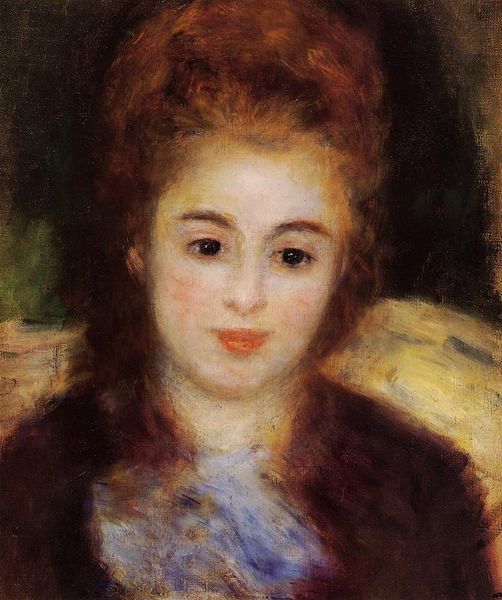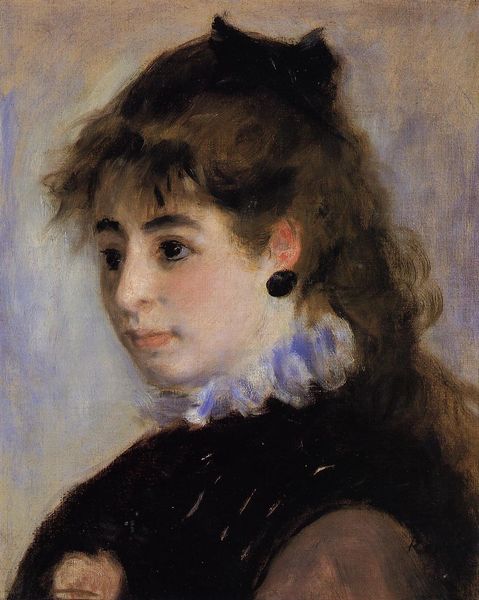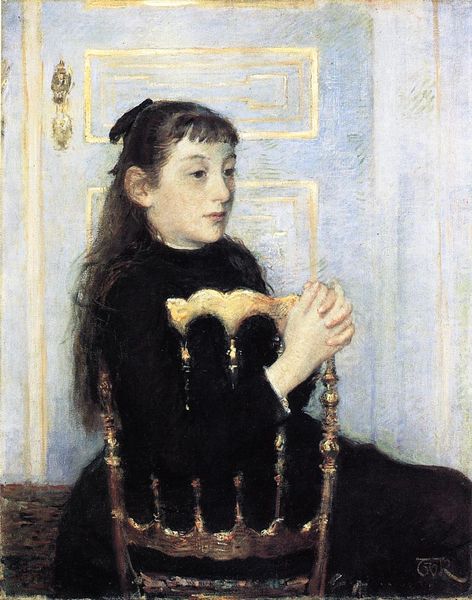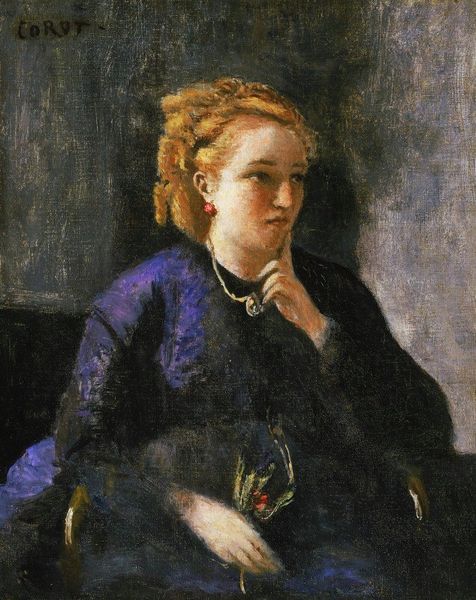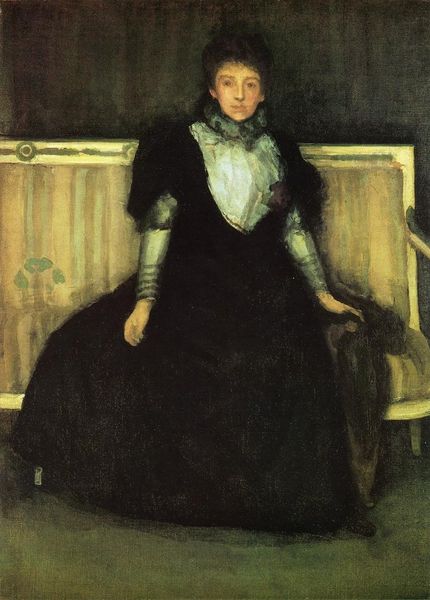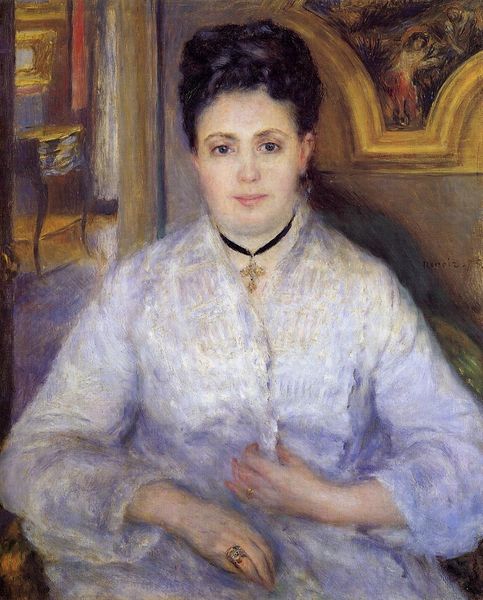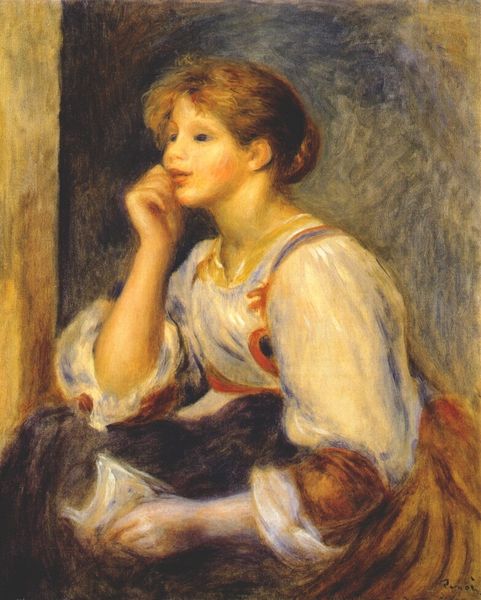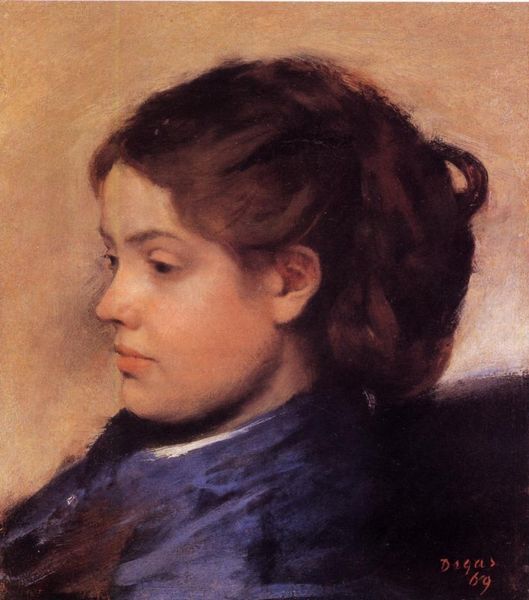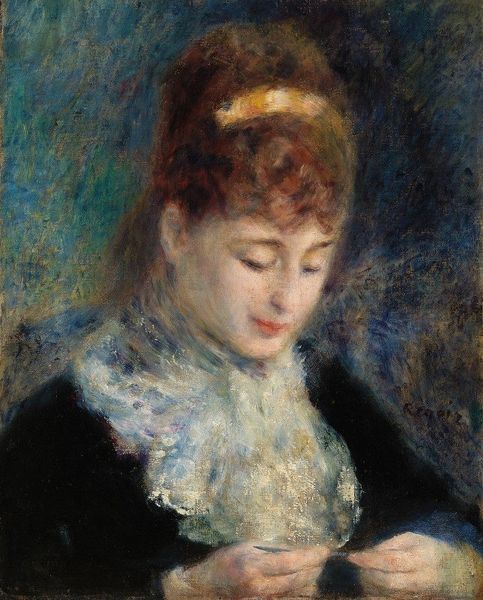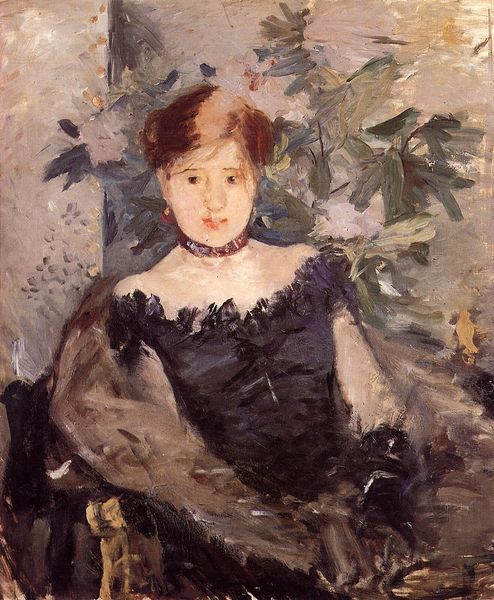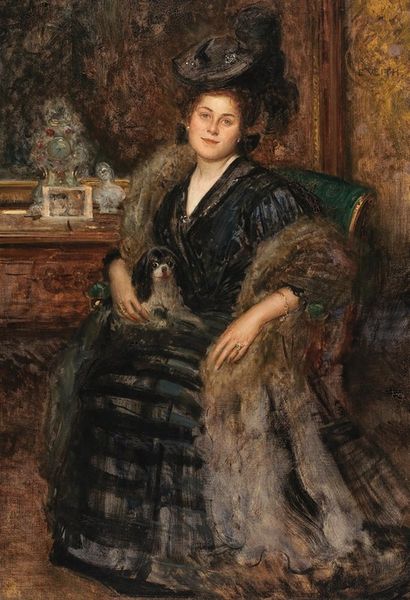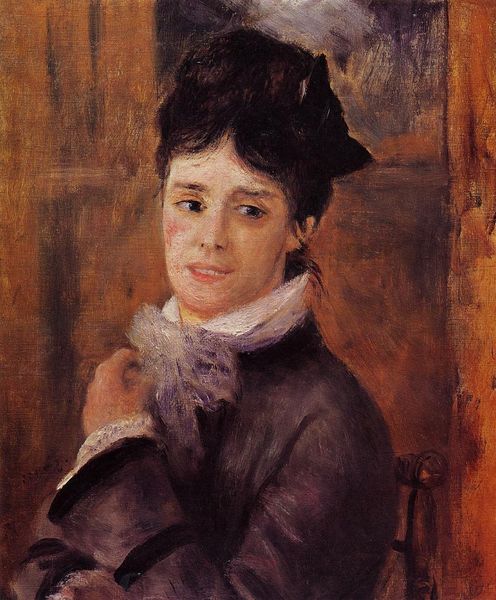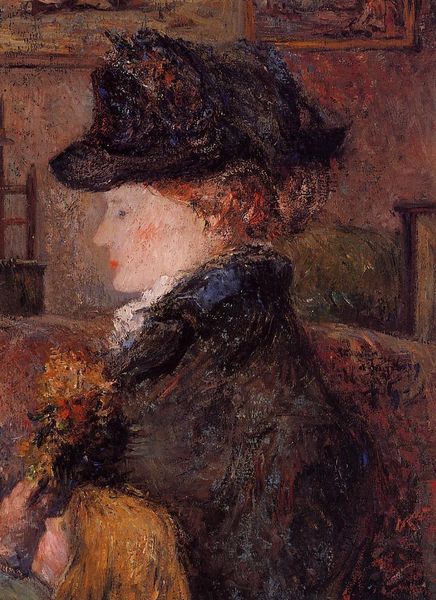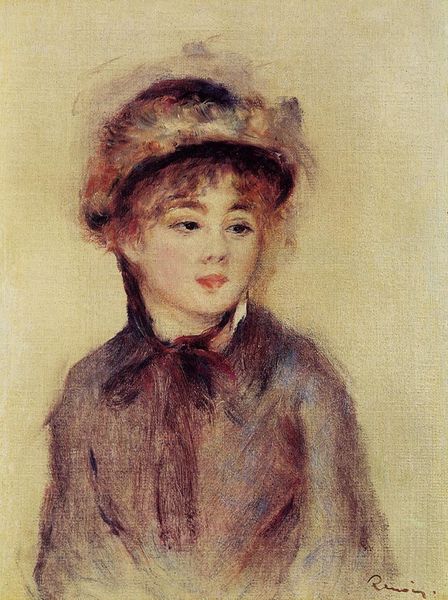
oil-paint
#
portrait
#
impressionism
#
oil-paint
#
figuration
#
oil painting
#
academic-art
Copyright: Public domain
Curator: Looking at Renoir’s "Portrait of an Anonymous Sitter" from 1875, I’m struck by the quiet introspection. What do you make of it? Editor: The rapid brushwork gives the composition a spontaneous feel, but I get the impression that we're seeing more than just the sitter’s momentary expression. I sense an undercurrent of constraint, maybe even melancholy. Curator: That's fascinating. Notice the texture, built up with layers of oil paint, yet, instead of sharp delineations, forms appear through subtle gradations. I’m particularly interested in how Renoir models the face and drapes her body, constructing soft tonal contours with paint. Editor: Renoir’s Impressionist technique clashes intriguingly with the academic conventions of portraiture at the time. Commissioned portraits served a distinct purpose for wealthy patrons, and his choices here reveal much about changing societal views towards portraying women in art. The sitter looks like she holds status within bourgeois circles. Her attire exudes a sophisticated sense of prestige; nevertheless, her identity remains a secret, obscured behind the layers of artistic interpretation. Curator: Exactly. Look at the colour harmonies, the muted blues and browns contrasted with the delicate whites of her lace collar. This gives the image a specific compositional arrangement to examine carefully, while also contributing to the picture’s melancholic air that we’ve discussed. The interplay is less about representation and more about capturing light and mood, and is crucial to decoding Renoir’s artistic intent. Editor: Absolutely. As we think about that artistic intent, let’s remember that Impressionism wasn't simply about aesthetics; it was a rebellion against the rigid norms of the art establishment. Renoir was showing this woman, or perhaps more accurately an artistic impression of this woman, according to new values within society. This portrait tells us volumes about the evolution of power, status, and artistry itself. Curator: Yes, this anonymous sitter, immortalized in fleeting brushstrokes, becomes more than a person. The work, a combination of representation and visual design, presents an opportunity to reconsider our perspective of artistic representation within portraiture. Editor: And a society undergoing immense transformation. It makes you wonder, who was this woman and what did this artwork mean to her within a changing historical period?
Comments
No comments
Be the first to comment and join the conversation on the ultimate creative platform.
